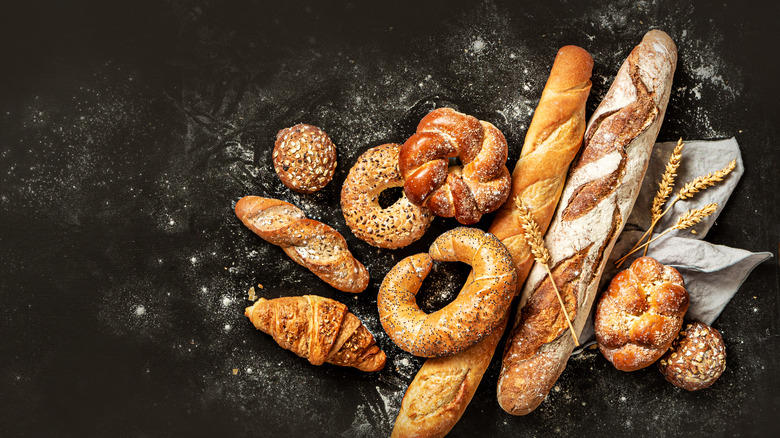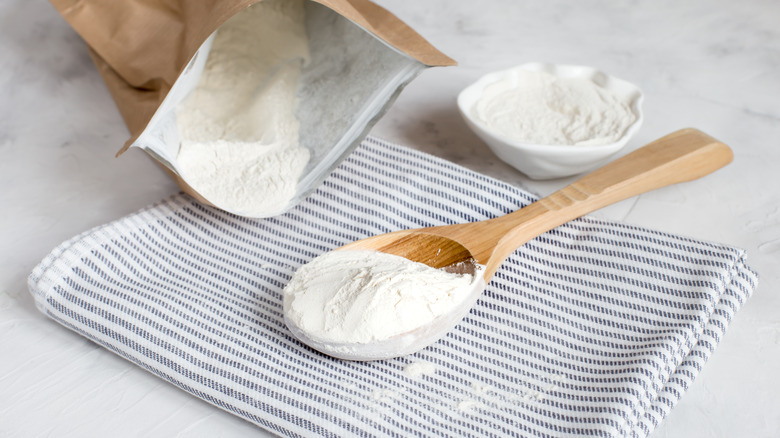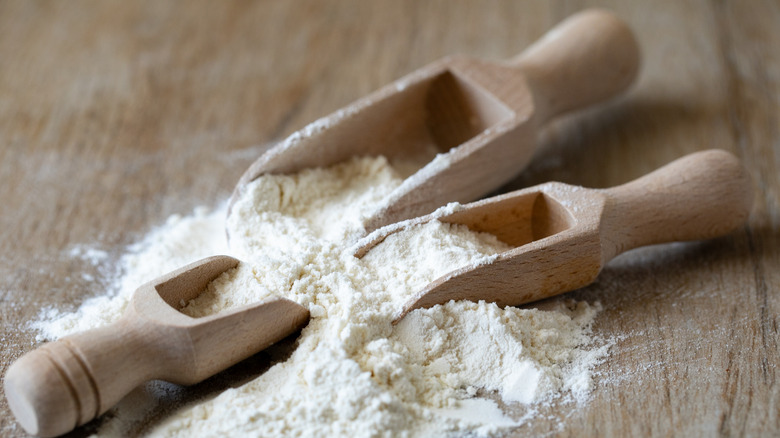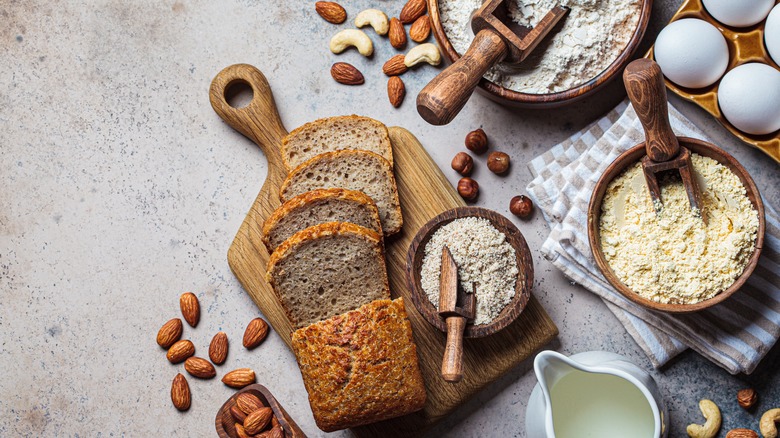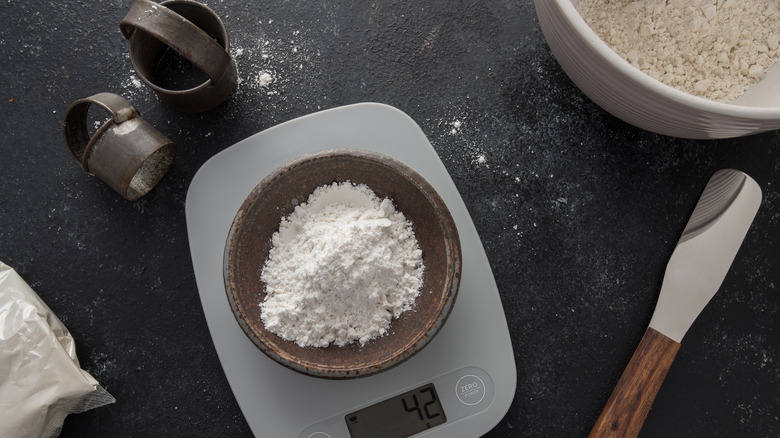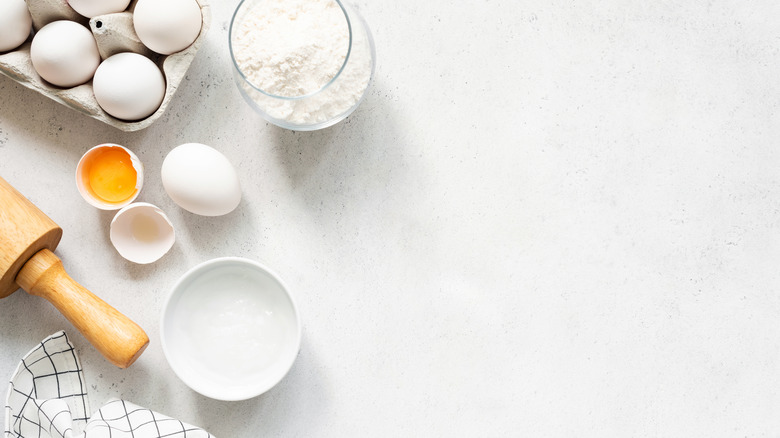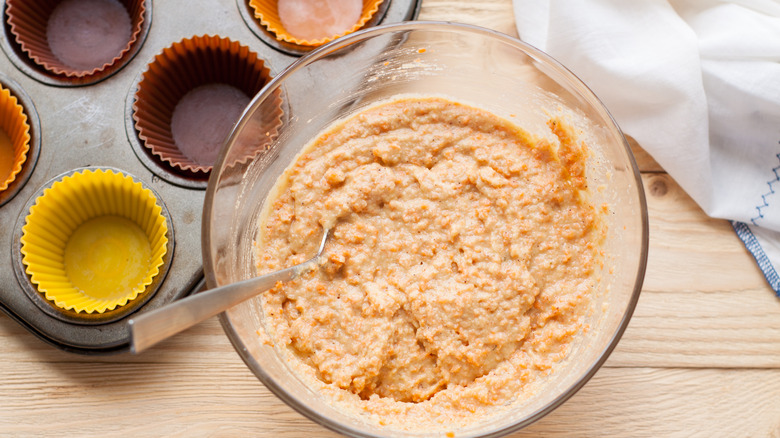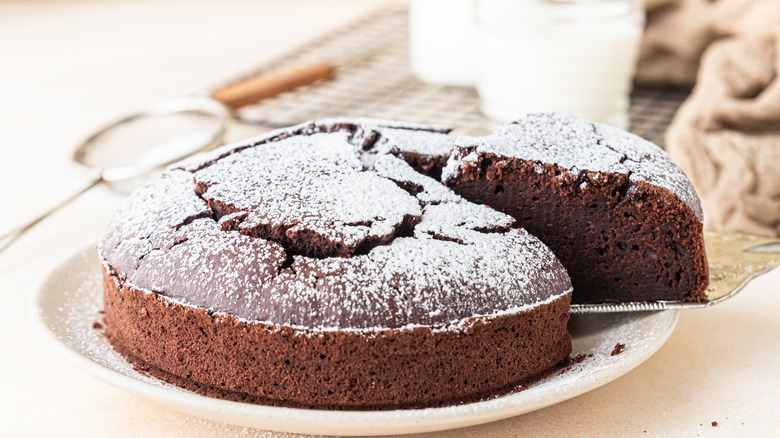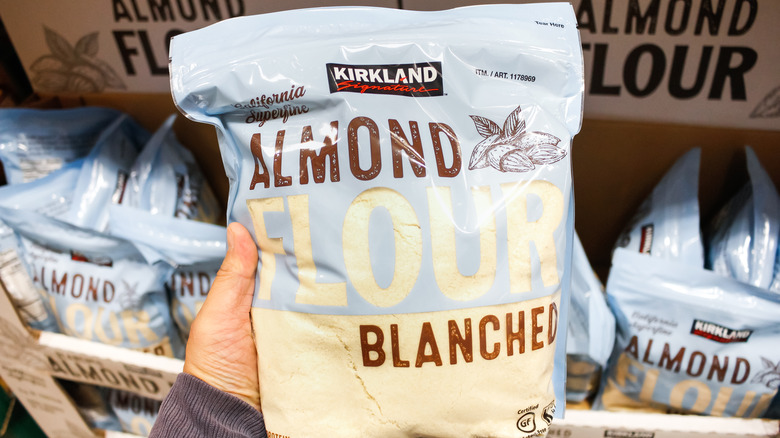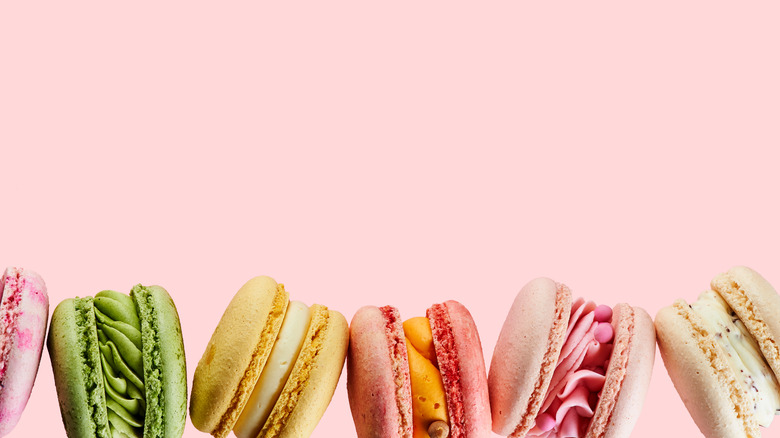11 Tricks For The Gluten-Free Baker
Cakes, cookies, and breads are generally irresistible treats that most people enjoy. The only problem is that they are all conventionally made with wheat. This is not a worry if you are not intolerant to gluten. But for those who cannot digest the proteins in wheat flour, in the past, you generally had to avoid these foods due to the lack of quality alternatives. Unfortunately, this is a problem that seems to be increasing in occurrence. Harvard School of Public Health has estimated that 1 in 133 people in the United States has celiac disease — an autoimmune condition that causes inflammation of the small intestine when they eat gluten; some people follow gluten-free diets without a medical need, finding themselves feel healthier.
So, what exactly is gluten? This refers to the family of proteins that are found in grains like wheat. Two of these proteins (gliadin and glutenin) are the most important for cooking. Gliadin is what makes doughs rise, while glutenin is responsible for making dough stretchy and elastic. This is what gives bread and other baked goods a characteristic structure. Follow these tips and tricks, and you are sure to become a master gluten-free baker.
Make sure to use a binding agent
The biggest mistake you're making with gluten-free baking is not using a binding agent. Wheat flour doesn't just provide flavor to baked goods; it gives structure to hold everything together, whether a loaf of bread or a cookie. Without wheat flour, you need something to mimic those gluten structures, or your ingredients won't have support.
If your gluten-free baked goods just fall apart, you probably didn't use a binding agent. These can help to create structure in the absence of gluten. Some non-conventional flours, like buckwheat and chickpea flour, especially those high in protein, can help bond all the ingredients. In other situations, you may need to use a chemical binder like xanthan gum. Not all binding agents are built for every situation, so carefully consider what ingredient you need to use on a case-by-case basis. When in doubt, follow the guidelines of each recipe and don't use more than recommended. Too much xanthan gum can leave your bread and desserts gummy (via King Arthur Baking).
All-purpose flour blends are your friend
Ten years ago, you couldn't walk into a supermarket and find a selection of high-quality all-purpose gluten-free flour blends. Instead, you likely had to go to a specialty store to get the ingredients to mix your own. Now, you can find brands like Cup4Cup, King Arthur, and Bob's Red Mill in most stores.
Cup4Cup's multipurpose flour was developed by acclaimed chef Thomas Keller's team. The company claims you can substitute this flour at a one-to-one ratio for almost any recipe that calls for wheat flour. These blends are specifically designed to help create the structure you are missing in gluten-free flours and already include a binding agent. Cup4Cup's product contains cornstarch, white rice flour, brown rice flour, milk powder, tapioca flour, potato starch, and xanthan gum. However, Gluten-Free on a Shoestring warns that the functionality of these blends is a myth and that they cannot just be switched to wheat flour in conventional recipes. You may have to do some of your own experiments to see in which situations these flour blends can work as a substitute.
Give lesser known flours a chance
We certainly love the convenience of all-purpose flour blends, but we encourage you to check out some lesser-known flours that could offer exciting twists to your gluten-free recipes. There is no shortage of gluten-free flour, from millet flour to rice flour. One type of flour worth trying is buckwheat flour. Made from a fruit (not a grain), this high-protein flour makes for a great buckwheat banana bread that is both gluten-free and vegan. Some alternative flours, like buckwheat, can help build the structure you are missing in the absence of gluten (via Baked2Go).
Nut flours are also high in protein, making them great for gluten-free baking. Almond flour is probably the most common in baking, but you also may see flours made from pistachios, pecans, and peanuts, among others. From the Larder advises that nut flours are most successful when combined with another flour. To keep your treats gluten-free, you may need to use nuts flours with other non-conventional flours like rice or tapioca. Also, keep in mind that there is a high prevalence of nut allergies. Nut flour may not be the best option if you don't know who will be consuming the products.
Measure carefully
Like all baking, measuring your ingredients properly is essential to gluten-free baking. This is especially true for flour. One of the biggest mistakes people make when baking is not using a scale to measure flour. With wheat flour, weighing the flour is the most accurate way to measure it.
Weighing can be useful in gluten-free baking, but first, you need to know the weight of the type of flour you are using. Not all flours and blends are going to weigh the same. GF Jules recommends measuring a cup of flour by volume and then placing it on a scale to get the weight. Don't just scoop the flour out with the measuring cup. This can add a lot more flour to your "cup." Instead, spoon the flour into the measuring cup and level it off with a knife. Once you know the weight of each particular flour, you can weigh it when baking a recipe.
Increase liquid
All-purpose gluten-free flour blends, like Cup4Cup, are a great addition to your baking arsenal. However, as already noted, you may not be able to simply substitute these flour blends one-for-one as the companies suggest. One reason this is the case that gluten-free flours absorb more water than wheat flour. As a result, many gluten-free recipes call for larger amounts of liquid than conventional recipes (via Simply Recipes).
Gluten-free batters tend to be looser because of the excess liquid. They may even contain extra eggs because they are needed to help create structure. Because of all this extra liquid, you may need to use extra leavener to get your doughs and batters to rise. This completely changes the ratios. While gluten-free flour blends are the closest approximation to all-purpose wheat flour, there is a strong chance you'll still have to adapt recipes that contain wheat flour to get them to work for gluten-free baking.
Let batters rest
With conventional wheat batters, you generally don't see a recommendation to let the batter sit before baking. While some recipes may include make-ahead instructions, you typically make the batter and put the cake in the oven right away, as they can quickly lose the ability to rise (via Prepared Chefs). With gluten-free batters, however, they benefit from letting them rest.
King Arthur Baking explains that letting the batter sit will allow the gluten-free flour to hydrate, which helps develop structure. They recommend resting cake batters for 15 to 20 minutes. However, you don't want to let them sit for too long, as a leavening agent can start to lose its rising power. Prepared Chefs advises not to leave any batter out, regardless of whether it contains gluten, for more than an hour. Gluten-free baked goods already have a hard time rising, so it is essential to not weaken the power of your leaveners too much.
Adjust baking time
Because gluten-free batters typically contain more liquid, they will take longer to bake — and this is especially true for cakes. Plus, these batters do not operate by the same clues and indicators for doneness (via I am Gluten-Free). When fully baked, gluten-free cakes are not firm to the touch like traditional wheat cakes. So if your cake does feel firm coming out of the oven, it is likely over-baked. Gluten-free cakes also do not brown the way standard cakes do, so it can be difficult to just look at the pan and tell if it's done.
To tell if your cake is baked, touch it lightly. It should spring back slightly but not be completely solid. If you feel it and the center is loose and runny, you need to bake it longer. Similar to other cakes, you can use a toothpick to test the doneness. You can take the cake out of the oven if just a few crumbs are present. The cake will continue to bake through carry-over cooking for another couple of minutes.
Buy smaller quantities of flour
Wheat flour is cheap and readily available, while gluten-free flours are often costly and can be hard to hunt down. This is changing now that gluten-free flour has increased its market share, but it is still generally tough to buy in bulk. It is understandable to have the urge to stock up on gluten-free flours, but that might not be the best idea.
All-purpose wheat flour has a shelf-life of about six to eight months for best quality, while gluten-free flour blends tend to have a shelf life of only three to six months (via Good Measures). Unless you bake at a high volume or have vast freezer space, you probably want to stick with buying smaller quantities so you don't end up wasting most of it. Plus, even wheat flour can lose its freshness after a few months, so it is generally a good idea to not buy more than you think you'll use over the course of a few months.
Try traditionally gluten-free desserts
With the improvements in gluten-free products, you can now enjoy all the baked goods you might have been missing out on, like cakes and cookies — some versions are convincingly similar to gluten-containing counterparts. However, gluten-free recipes can still be fickle and might not turn out as you hope. If you really want extra security that your dessert will be a success, try traditionally gluten-free sweets. There are so many time-tested options.
Most meringues are gluten-free. The classic French cookie, macarons, are made with almond flour. The shells are meringues, light and chewy cookies made from whipped egg whites, and you can put whatever you want in the center. While macarons are a complex technique to master, they make a great gluten-free dessert where you won't have to wonder if the recipe has been adapted correctly.
Many custards are also traditionally gluten-free, and who doesn't love a creamy, luscious treat? Another classic French dessert, creme brulée, will make you and your guests feel so fancy that you won't stop to think about it being gluten-free. According to Ina Garten, you can even make creme brulée without a blow torch by caramelizing the sugar under the broiler.
Be patient with yourself
Gluten-free baking is really difficult. However, the absence of gluten can mean more than just a lack of structure. According to the gluten-free bread company Baked2Go, the gluten structures also produce fluffiness in baked goods like bread. This is why gluten-free products often turn out dry, brittle, and fragile.
Baking with gluten-free flour is not as consistent. So, don't give yourself a hard time if you mess up now and again. Instead, give yourself grace and patience as you figure out what works and doesn't. If you are new to gluten-free baking, start with recipes specifically labeled gluten-free before trying to adapt other recipes. These recipes have been tested to work out any issues. If you trust the author's culinary knowledge, you can be confident the recipe will turn out well. Your best bet may be to look for recipes by people who follow a gluten-free diet, such as Elisabeth Prueitt of Tartine Bakery. Having lived with Celiac disease, Prueitt has had the time to understand what makes a great gluten-free treat.
